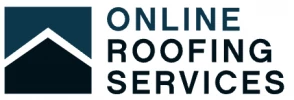Late updated: 18 Jun 2024 09:06
Written by: Oliver Bennett
Understanding UK Roof Insurance Policies: Key Insights for Homeowners
Securing our homes with the right roof insurance policy is a crucial aspect of homeownership in the UK. Buildings insurance policies often include coverage for roofing repairs, ensuring that we're protected against unforeseen damage. Most insurers cover roof repairs and replacements, making separate roof insurance unnecessary for standard roofs. However, specific terms and conditions may apply, particularly for non-standard roofs, so it's essential to understand the policy details thoroughly.
Understanding the intricacies of roof insurance can sometimes feel overwhelming. Yet, knowing the scope of our coverage helps us make informed decisions when it comes to maintenance and claims. Flat roofs, for instance, are more prone to damage due to water and debris accumulation, which might require additional maintenance or specific insurance clauses to cover potential issues effectively.
Routine maintenance of our roofs is not just a recommendation but a necessity to prevent avoidable damage. This attention to upkeep ensures that when we face adverse weather or unexpected events, our insurance covers the necessary repairs without complications. Keeping abreast of what our insurance includes – from accidental damage to complete roof replacements – provides peace of mind and preparedness against any roofing mishaps.
Understanding Roof Insurance Policies in the UK
In the UK, roof insurance is crucial for protecting homeowners from hefty repair costs due to various damages. We'll delve into the different types, key terms, and conditions, and what is typically included or excluded in these policies.
Types of Roof Insurance Coverage
Roof insurance generally falls under buildings insurance. This type of coverage protects the structure of your home, including the roof, from specified risks such as fire, storms, or vandalism.
Flat roof insurance is often treated differently because flat roofs may be more prone to leaks and environmental damage. For non-standard roofs, such as thatched roofs, specific policies might be necessary.
Meanwhile, contents insurance policies cover belongings that might be damaged due to roof issues, although they do not cover the roof itself. Lastly, some insurers provide specialised cover for accidental damage, which might be critical if a sudden mishap occurs.
Key Terms and Conditions
Insurance policies come with various terms and conditions that homeowners need to understand. The most important one is the deductible or excess, which is the amount you pay out-of-pocket before the insurance kicks in.
Some policies might exclude coverage for certain types of damages, such as those resulting from wear and tear or neglect. Others might require specific maintenance practices to be followed to keep the coverage active. Understanding these terms helps ensure we're not caught off guard when filing a claim.
Conditions for claims often include providing proof of damage and possibly even maintenance records. Knowing these ahead of time ensures we meet all insurance company requirements.
Policy Inclusions and Exclusions
Typical inclusions in roof insurance policies cover damages from natural disasters like storms, as well as specific events like fire or vandalism. Coverage for both roof repair and complete roof replacement might be available, depending on the policy.
Exclusions commonly include damage from wear and tear, poor maintenance, or certain gradual processes. For example, roofs that aren't maintained properly might not be covered for some types of damage. Knowing what's excluded is as vital as knowing what's included, to avoid surprises during a claim.
Some standard policies might also exclude specialised roofing materials, such as those used in thatched roofs or other non-standard types. Thus, it’s essential to choose a policy that aligns with the specific needs of your home’s roof.
Effective Claims Management and Maintenance
A successful roof insurance claim often hinges on proper procedures and diligent maintenance. Understanding the nuances of filing a claim and maintaining your property can be the key to securing adequate coverage.
Procedures for Filing a Claim
When making a claim, the first step is to contact your insurer promptly. Typically, insurance companies need to be informed as soon as you assess the damage. Delays can sometimes complicate the process. Many policies allow claims to be made within 180 days, but it's crucial to get in touch as soon as possible.
Documenting the damage is essential. Photographs and detailed notes of the impacted areas will serve as critical evidence. This documentation should include before-and-after images if possible.
An insurance adjuster will likely be assigned to assess the damage. It's beneficial to walk through the assessment with them, pointing out all relevant details. Any estimates or receipts for emergency repairs should also be kept on hand.
Maintaining Your Property to Ensure Coverage
Routine maintenance is vital in ensuring that your roof remains in good condition and that your insurance policy remains valid. Insurance providers often require proof that regular maintenance has been undertaken. This can include scheduled inspections and repairs.
Keeping a well-maintained roof involves checking for issues like loose tiles, leaks, or deterioration in the roofing material. For example, slate roofs may lose individual tiles due to the impact of weather, while metal roofs might rust without proper care.
Neglecting maintenance, often labelled as poor maintenance, can result in denied claims. Insurers might argue that damage could have been avoided if proper care had been taken. Thus, maintaining detailed records of all maintenance activities is crucial.
Understanding Insurance for Different Roof Types
Different roof types, such as flat roofs, tiles, slate, and metal, each come with unique considerations for insurance.
- Flat roofs are prone to water pooling, so routine checks for leaks are necessary.
- Tile roofs can suffer from weather-related tile displacement.
- Slate roofs are durable but expensive to repair, making insurance crucial.
- Metal roofs offer durability but require regular maintenance to prevent rust.
Insurers will look at the roof's structure and the materials used when assessing risk and coverage. It's important to understand the specifics of your roof type to ensure it remains protected under your insurance policy.
